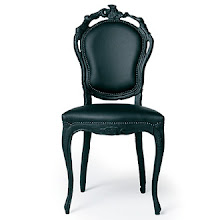Borschke, M.
para-1. Kevin McCullagh: 'This rising tide of disaffection towards design tends to share twi themes: a distaste for the superficiality of design's media-celebrity nexus; and a growing discomfort with design's role in generating 'useless stuff,'... ' just as critics from outside design are sharpening their knives, designers are becoming racked with self doubt and loathing.'
2. Design problems are merely opportunities for design solutions. In a world where concerns about the environment have become mainstream, the creation of 'useless stuff' may now just be cause for hand-wringing, it might also signal bad design.
3. 'Some people argue that there is no such thing as sustainable design. These principles should form part of any good design.' Angelique Hutchison, ‘Design for sustainability focuses on reducing the environmental impact of a product during its manufacture, use and disposal or reuse. It uses strategies such as avoiding use of toxic substances during production, minimising materials used, minimising energy or water required during use, and designing for repair, reuse or disassembly and recycling.’
4. ‘I think that design's ability to address sustainability is limited by its focus on the object or product,’ Hutchison continues. ‘Designers need to consider the larger systems within which they (and their objects) are operating. They need to reconsider the 'needs' that they are trying to address through the design of a new object, and question if those needs can be met in another more sustainable way, through a different type of product or system or mode of use. For example, car share systems reconfigure the perception that the consumer needs a car, when what they really need is transport. Designers also need to work in a more interdisciplinary way, not only with other designers but across technical and social disciplines, to understand the complexities of social, economic, technical and ecological systems that influence their design.’
8.growing demand from the population at large means that designers are also turning to sustainable practice because it’s good business. Trend forecasters such as The Future Laboratory in London, are tossing around phrases like ‘conscience consumers’ and hyping ‘nu austerity’ as this year’s answer to last year’s ‘bling’, all the while assuring marketers and brand strategists that the market is out there, that the green consumer cuts across political lines and that the highly desirable, upper middle class market is ready to spend. Green design, that is, may be green in more ways than one.
11. If sustainable design is good design, then good design is good business.
12.‘Sustainable design is about creating environments that allow people to live, work, play in such a way that the opportunities to do similar will not be compromised in the future.’ For designers and architects, sustainable design may not only be ethical, it may be the opportunity of a lifetime.- Caroline Pidcock, president of the Australian Sustainable Built Environment Council
Subscribe to:
Post Comments (Atom)

No comments:
Post a Comment